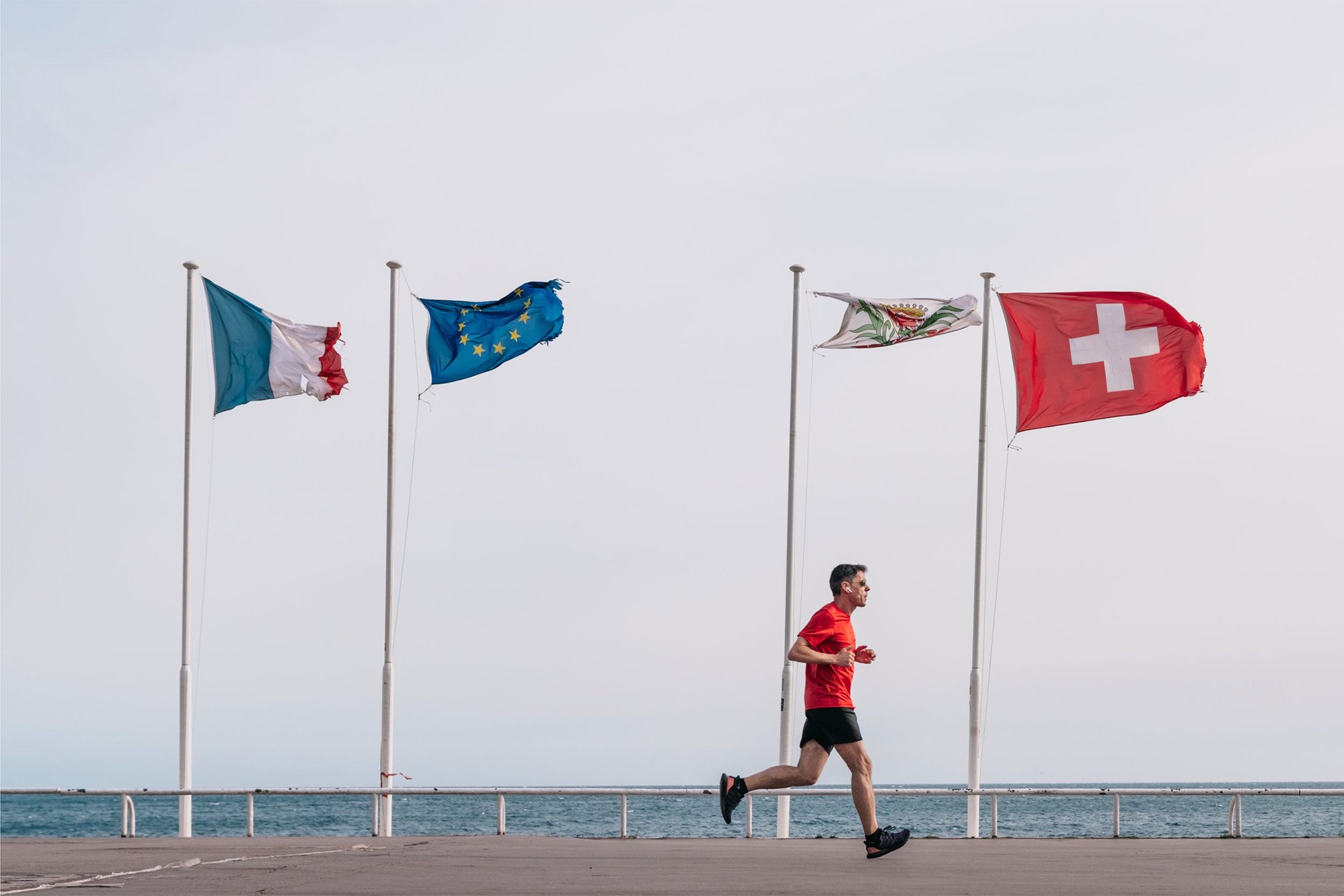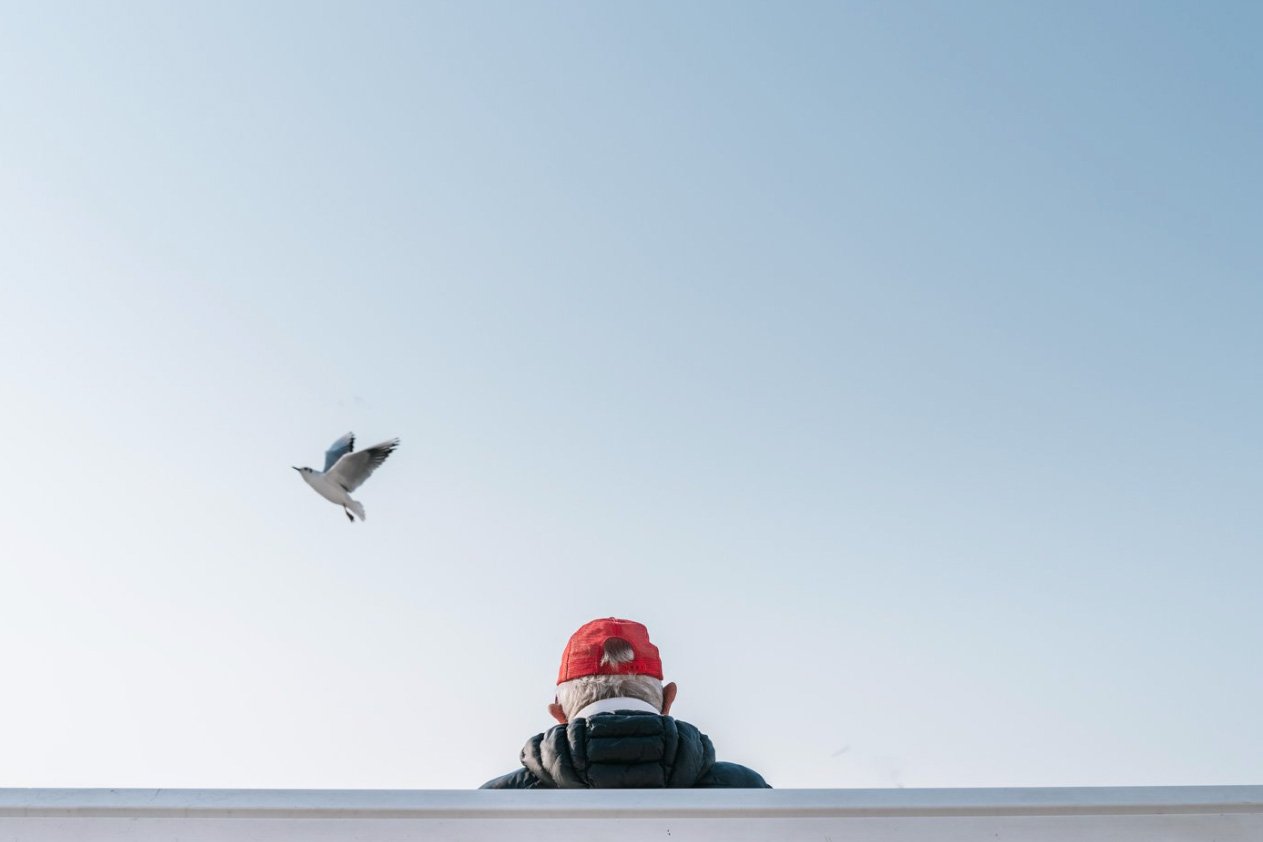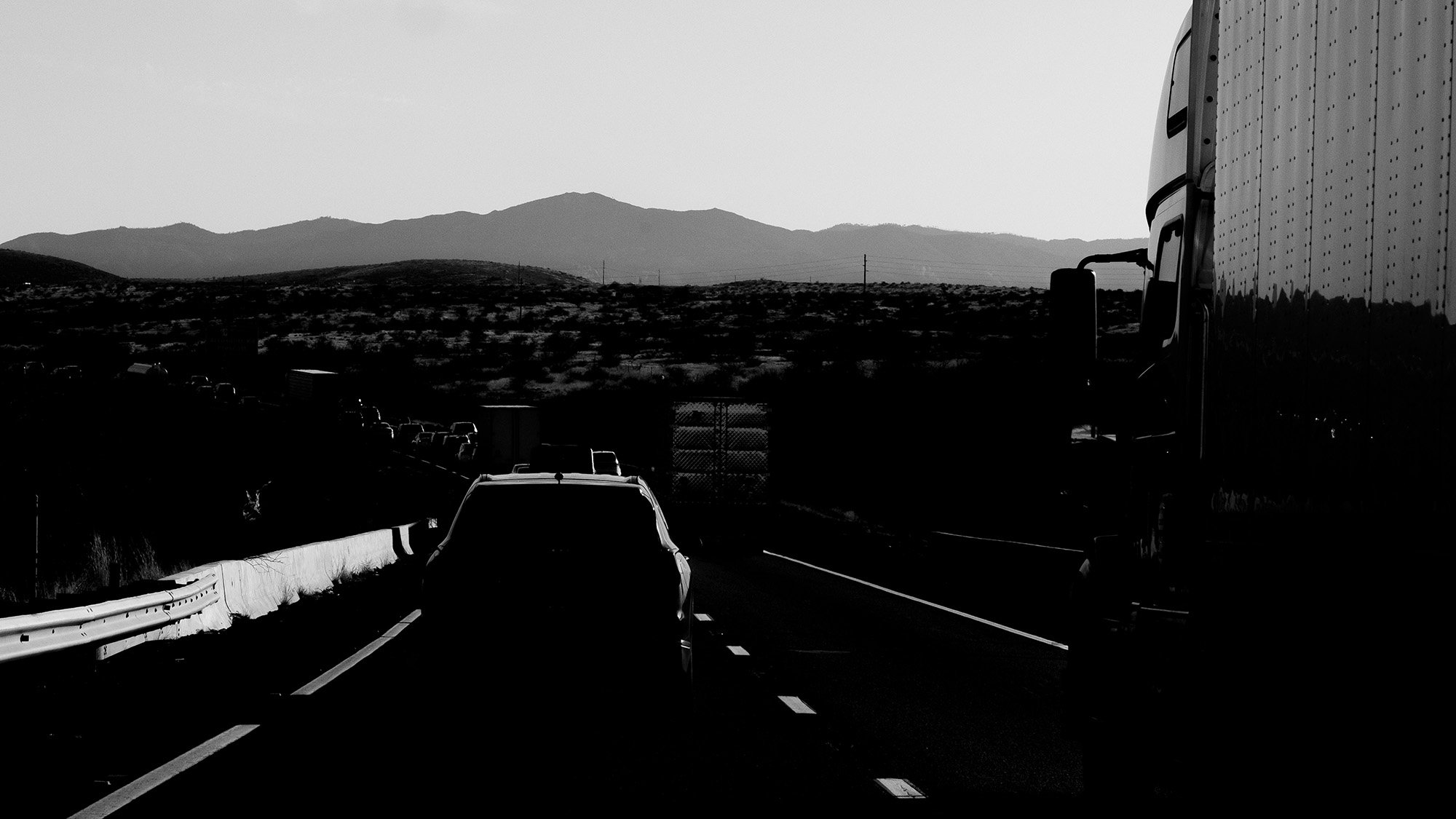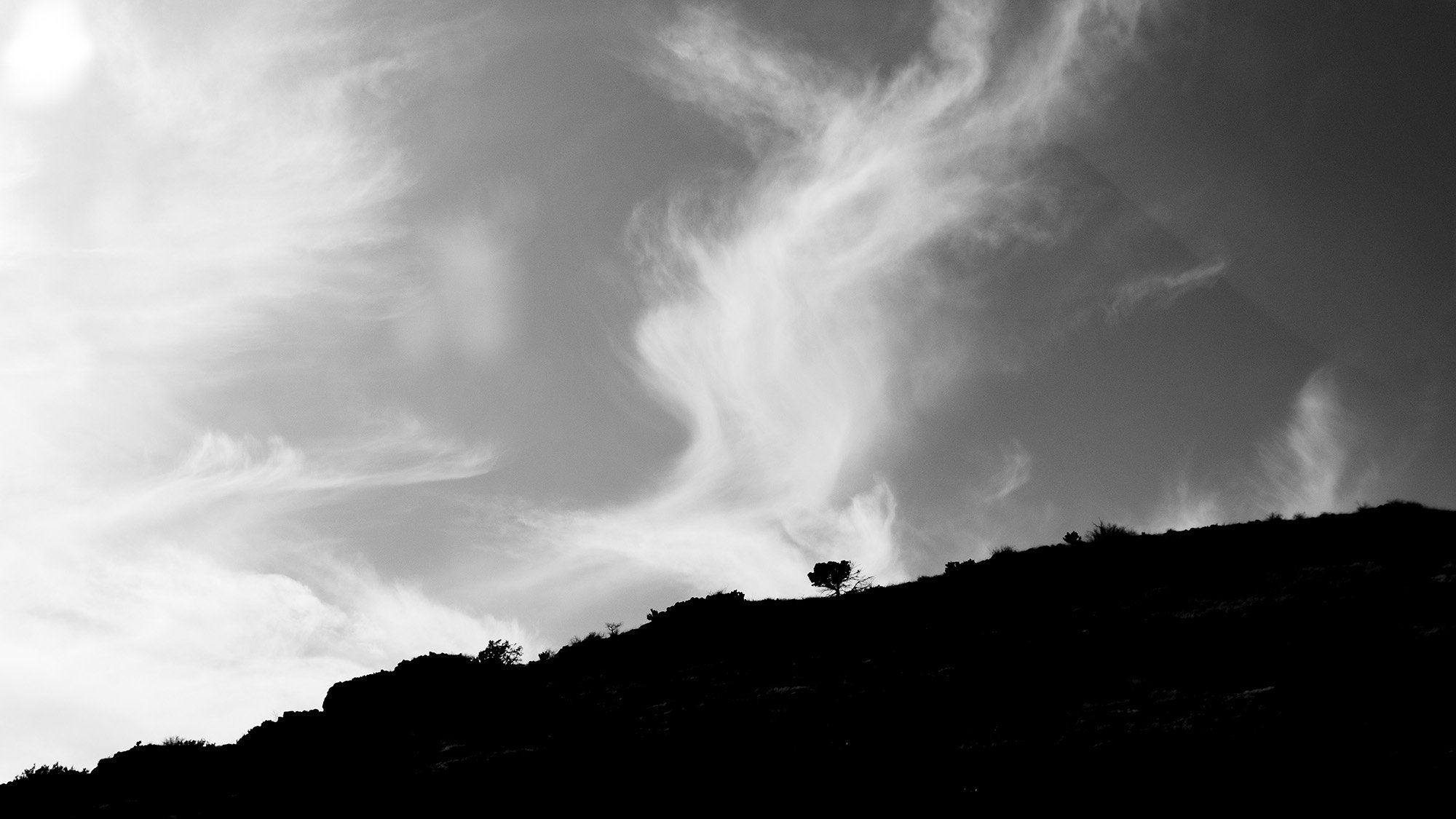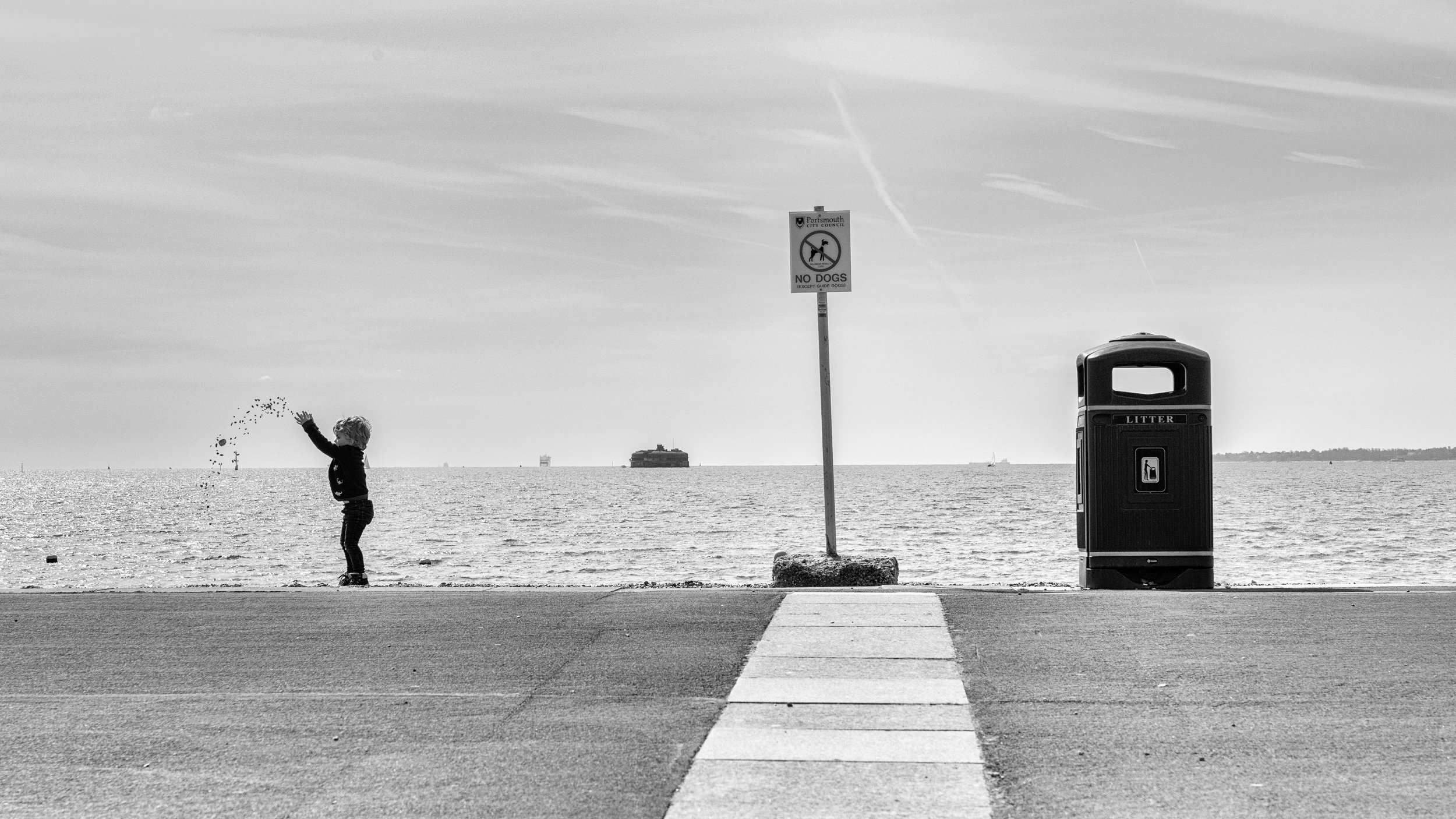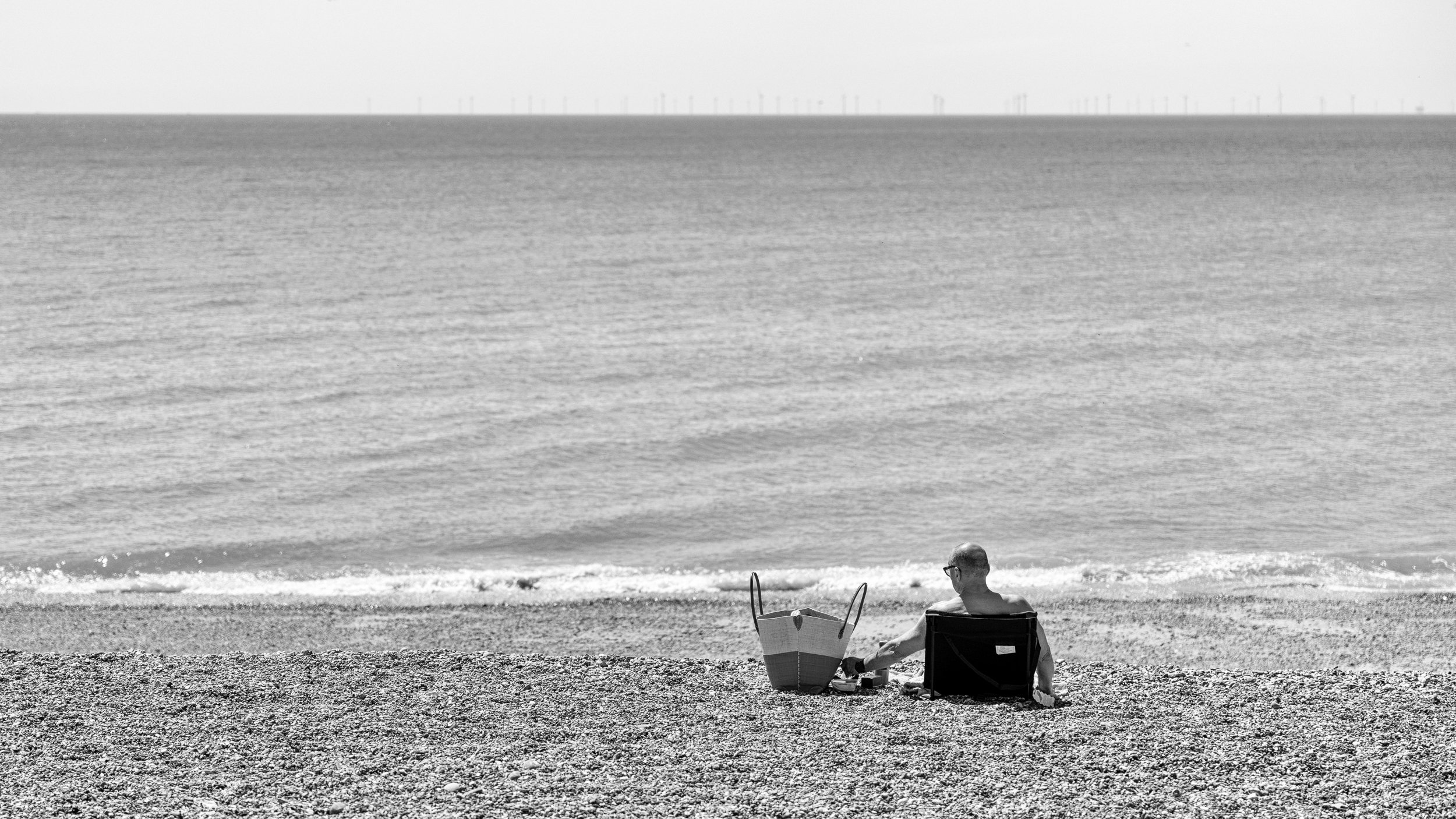MINIMALISM
Minimalism is about stripping something down to its bare essentials.
In painting, architecture or music that can be easily achieved. You simply create negative space, don't over-fill and leave room for "silence." In still-life and even portrait photography, the photographer can orchestrate a scene which has little in it except the key element(s). The artist simply leaves things out.
As a collective, our roots are in street photography. The history of this genre continually reinforces the fact that the photographer does not impact the scene, does not rearrange it or "bruise" it as Joel Meyerowitz describes it. The photographer remains detached. This means that part of our challenge was to find scenes rather than create them.
As is so often the way, through this assignment, we learned far more about minimalism than we perhaps imagined at the start.
ANN
In my street photography practice, I feel naturally drawn to rather minimalist frames, often set against the blue canvas of the sky and Mediterranean sea. Using this backdrop helps me to tackle sensory overload when out on the streets with my camera.
For this challenge, I tried to push my limits by actively adding something different and a so far rather unexplored element. Feedback on my photos frequently either underlines the peacefulness of the frames or criticizes the lack of dynamism. Drawing on these two comments I looked for a way to grow from the feedback by introducing something new. I approached this by taking two different paths - looking for movement and introducing a new color, namely red.
I am still struggling to snap frames without a human element. I seem to need people in my frame to create a connection between the scene and myself. I also seem to naturally use people as scale mapping out the aestheticism of a frame. My ultimate attempts here are the crates of coca-colas dropped off by a delivery man on the Promenade.
JEFF
I am a minimalist - in my life, in my work, and in my photography. I am always trying to distill down my choices, possessions, surroundings, and moments to their simplest state. I try to produce order, clarity, and consistency in the process. I thrive in a state of solitude and reduced sensory stimulation.
Keeping all of this in mind, I felt quite confident participating in this assignment. At the same time, I was focused on finding ways to grow through this experience and try something new. A took my camera out on rainy days. I tried to notice minimal scenes in indoor spaces that on first glance look cluttered or visually distracting.
I tried to turn off my unconscious pursuit of minimalism through harsh light and shadows. Instead, I explored the importance of color, line, shape, and balance from corner to corner within my frame. I avoided the urge to hide behind black negative space — my prime strategy for creating minimalism in my street, architecture, and still life photography. The assignment was challenging, inspiring, and fun.
In the end, however, I could not pass up the opportunity to share this series of photographs with everyone. In early April, my family and I traveled to warm, sunny Arizona for a 6 day vacation. On the second day of our stay, we drove from Phoenix to Sedona — a more than 100 miles drive each way - to see the red rock buttes and do some shopping in uptown Sedona. As a generally slow driver, my wife and kids pushed me to keep the pedal to the metal en route to Sedona rather than taking time to observe the beautiful, minimal desert scenes around us. The drive was uneventful and unfortunately uninspiring.
After a fun afternoon in Sedona, it took little convincing for my wife to agree to drive us back to Phoenix - a win-win situation for all of us. My wife and kids were excited to get home faster. I was excited to photograph the drive from my vantage point in the front passenger seat. Unbeknownst to us, the open road would not be our companion on this day. Instead, a rural traffic jam stretching many miles through the deserted Arizona countryside would be our reality. I embraced the cards we had been dealt and explored minimalism seen through glass in front of me.
TIM
My journey into minimalism took an unexpected turn early on in this assignment. Before I’d had a chance to create any new images, news had reached me from Germany (I lived there for 14 years) that one of my best friends there had died in a horrible car crash. Two weeks later; while waiting on news when his funeral would be and hoping I could make it there, my wife decided it was the right time to tell me that her feelings for me had changed. She didn’t love me anymore and didn’t miss the brighter days of our relationship. I was shocked and heartbroken. Three days later I was informed that the funeral would be in a week. It was close, but possible for me to make it after some work commitments I had down in Sydney. But what to do now? Should I go or stay to try and sort things out at home? I’d already told my friend’s wife that I’d come if I could. My wife at home wanted me to go. To give her some space and utilise the opportunity to spend time with my friends and be there for them at the funeral in Germany. Two days later I packed my things and headed down for my job in Sydney before flying to Germany. My camera came along for the ride but photography was the last thing on my mind.
Before all this happened, I had been looking forward to exploring the boundaries of minimalism. How complicated an image could I create while still maintaining a minimalist look? At what point did an image cease to feel minimal? With the onset of the trauma and depression associated with processing this turn of events however, that desire and motivation began to fade. Not wanting to let my Stolen Echoes comrades down though, and thinking I needed to do something to get my mind off the situation, I persevered and took to the streets of Sydney on a free afternoon. But it felt pointless and forced. I couldn’t care less about whether or not I liked any image I made. It was somehow a new form of minimalism if you will; photographing without any desire to judge any degree of fondness for an image. I simply tried my best to get at least something on my SD card. But the joy and desire to do something creative was gone. A feeling I would take with me to Germany and still remains with me to this day, although thankfully in a more muted sense.
I find myself now trying to rekindle a new sense of minimalism - that minimal requirement, whatever it is, that thing which lights our inner spark and fuels our motivation and desire to be creative. Somehow it’s lost. Years ago, for example, the idea of standing on top of a mountain to photograph the sunrise was motivation enough to get me up at 3am. To hike for hours in the dark and take photos that were just for me (as at the time there was no Instagram or the like). I even remember not feeling too bothered about not getting a great image, if the weather wasn’t quite right for example. The joy was found in the process and not the result. A feeling I long desire to return to.
I do know however, that these feelings are temporary and that with time, and some help, that spark can shine bright again someday. So forgive me for being so negative right now, but I really didn’t know what else to write about my time during this assignment and the images I managed to capture. They document one of the most difficult and darkest periods of my life, so I guess in that sense they are in fact quite complicated. Even if they were created in such an emotionally minimal way.
HUGH
staring at the sea
I realise that, for the most part, my images are typically busy things. I hadn't realised quite how busy until I started trying to make images for the Minimalism assignment. Part of this is because the places I seek out are usually teeming with life - lights, signs, people, traffic. These are the places I am drawn to and so it seemed natural to attempt to minimalise scenes there. Seeing minimalism as a street photographer was how viewed the challenge. It didn't take long to appreciate that my usual places and "quick draw" shooting style were not going to bring me much success. After all, there's a reason that Piccadilly Circus is used as a metaphor for busy and crowded!
I needed to step back. Slow down probably. Find a backdrop which was uncluttered and allowed the protagonist to star in their own space. A long weekend on the Suffolk coast helped me to see things differently - although, ultimately, those are not the images that feature here. A distant horizon and not much in between provided a great minimalist backdrop. Easy access to Southsea and Brighton on the English south coast helped me make my mind up. With thoughts of Tony Ray Jones and Martin Parr in my head, I knew I wanted my images to speak of the English seaside. Perhaps, being islanders, us Brits are born with a dispensation for staring out to sea. It wasn't difficult to find individuals alone on the seafront, lost in their distant thoughts and doing their own thing. The very epitome of minimalism.
Southsea, England. 2022.
Brighton, England. 2022.
West Sussex, England. 2022.
Brighton, England. 2022.
Brighton, England. 2022.
Brighton, England. 2022
KRIS
Do you ever feel overwhelmed with information? I certainly do. And when that happens, I like to try and simplify as much as possible within my creative life as well as my day to day. This months assignment, minimalism, provided an opportunity to scale back a bit, in the hopes of creating the necessary space to focus on what’s really important.
One way that I find something visually stimulating is to focus on the extremes, and imagine what it would look like merging the two. Rectangles, triangles, circles and squares can all be used with fascinating effect by focusing on the right things. Instead of pulling detail out of the shadows, I focus on what it would look like if the darks were crushed and the highlights have minimal amounts of distraction. It’s like graphic design, using the city streets as a kind of template.
Intersections
Rays of light squeeze through the spaces in the skyscrapers and blaze a trail that someone can walk through. Elements, such as a small gesture, a bold color, monster shadow shapes from six stories high or a pair of mirrored sunglasses can be useful in creating visually stimulating work. The essence of the shapes are brought into focus by the power of sunlight, illuminating the surface of the city and presenting us with a strong foundation to build upon.
Slides
Down Under
Coffee Please
Minimalism can also be created by deliberately seeking out scenes that are minimalist by nature. Instead of taking things away, or omitting something, the scene is what it is. A recent walk along the lakefront provided an opportunity to clear my head of all the static, informational nonsense that I’ve been collecting. A chance to empty my mind and the frame, making decisions about what’s necessary to hold onto and what needs to be discarded. It’s a meditative experience that allows the static to come and go, everything and nothing, tension and release. Water’s wisdom offers us lessons in how to deal with obstacles, appreciate the mystery of the unknown in it’s depths, and fear it’s power when the wind shifts and storms approach. There’s calmness in it’s presence, and excitement in it’s possibilities. None of these things can exist when I have too much noise.
Hope and Despair
Minimalism, in life and art, inspires me to take inventory, see what’s necessary, and discard the waste. By focusing on what’s important, I’m able to build something that speaks to me, has meaning, and a bit of hope in an increasingly complex world.




